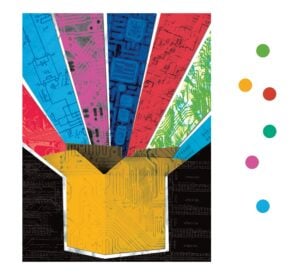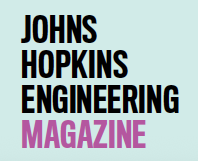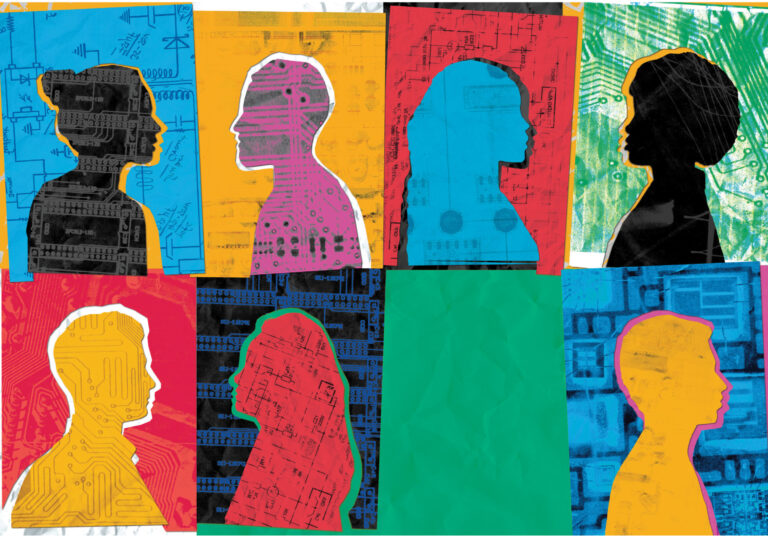
Scott Heines’ experience as a student in Applications of Power Electronics Design began with the delivery of a big box.
The package arrived before the first session of the online course offered by Johns Hopkins’ Engineering for Professionals (EP) program. It contained all the gear required to create and test a working circuit board that is the students’ final class project.
“I’m a pretty hands-on engineer,” says Heines. “I learn best by being able to apply things going on in the classroom or in lectures. So this was very exciting.”
Juan Ramirez, a senior staffer at the Applied Physics Laboratory, teaches the course. (He won a 2023 faculty award for designing it.) He notes that each box contains an assortment of different electrical components—including a resistor, capacitor, and magnetic cores.
“Enough is provided that they can go ahead and build the circuit to whatever their design is,” says Ramirez. “They wind their own magnetics. No two students will have the same exact transformer, because they’re designing their own.”
Northrop Grumman engineer David Clancy took the course in spring 2025 as part of his work toward a master’s degree through the EP program. He says that the box—and his sense of accomplishment in assembling its contents—“is something I didn’t get with any other course I have taken.”
Ramirez says that even though his course is fully remote, like all EP offerings, it’s important to him to offer a hands-on component. “A lot of students go through their undergraduate education in electrical engineering and maybe never get the opportunity to learn how to solder electrical components onto a circuit board,” he says. “They have that opportunity in this course. We send them a solder station in the box.”

“A lot of students go through their undergraduate education in electrical engineering and maybe never get the opportunity to learn how to solder electrical components onto a circuit board. They have that opportunity in this course.” — Juan Ramirez, senior staff member at the Applied Physics Laboratory
Responsive to Industry
The course balances flexibility and academic rigor in a way that EP students find both attractive and useful. Yet Ramirez’s course took shape in response to students’ desire to put the learning acquired in prerequisite courses into direct practice.
“When I was starting my work in industry, and even being involved with recruitment and mentorship as I was progressing in my career, I was continuing to see this same discussion about the gap between the fundamentals that we learn in school and how to actually apply them,” Ramirez says.
Dan Horn, A&S ’92 associate vice dean for professional education and lifelong learning at the Whiting School, says that finding and filling these gaps is the center of the EP enterprise. “The program chairs do a magnificent job of surveying industry, identifying critical needs, and building coursework to help Engineering for Professionals students meet those needs,” he observes.
Existing program faculty are the engine for EP offerings, continues Horn, “but if we don’t have someone who can teach a particular course in a new area, we recruit an expert in the field to develop and deliver that course. What sets EP apart from our peers is that our faculty are in roles to which students aspire.” Instructors for the EP program have been drawn from AT&T, KBR, and the U.S. Army Research Laboratory to teach courses in areas such as Generative AI for Cybersecurity, Advanced Concepts in Agile Technical Management, and RF Power Amplifier Design Techniques.
The skills developed by EP students boost their career trajectories as well. Clancy is close to finishing his master’s degree with support from Northrop Grumman. He adds that a course like Applications of Electrical Power Design “allows me to essentially have a practice run before I have to go do it in my professional career. I made all the mistakes when it didn’t really matter…. Now I have the knowledge to just build something, test it, and capture my own data.”
Satisfaction with EP offerings is a two-way street with benefits for recruiting and the mobility of seasoned engineers, says Raytheon’s Raul Almazan, who is an engineering technical leadership development lead at the aerospace and defense company. As a key corporate partner with the EP program in systems engineering, Raytheon selects annual cohorts of 20 to 24 employees to enter Johns Hopkins’ Master’s in Systems Engineering program, Almazan notes.
Raytheon’s collaboration with the EP program “is built upon our own priorities,” he says. It has become a key element both in the company’s success in recruiting talent, as well as in creating “a mobility ladder for all of our employees who are in the cohorts.” Raytheon has graduated over 500 people through the EP program.
“It’s been a great opportunity to accelerate career development and talent pipelines,” says Almazan.
“The program chairs do a magnificent job of surveying industry, identifying critical needs, and building coursework to help Engineering for Professionals students meet those needs.” — Dan Horn
Team Learning
Successful online education requires active shepherding of enrolled students—especially the widely scattered cohorts that take challenging courses in addition to navigating their busy working lives. So Ramirez designed the class to have multiple checkpoints to assess progress. He also encourages students to create teams to provide each other with a steady stream of peer feedback.
Heines says that it was a highly effective tactic: “My team was a team of three, because there were three of us on the West Coast, so it made sense from a time zone perspective.” The safety net offered stability and structure for the experience. “There was only so far that you would stumble before you had an obvious check-in point where Juan, or somebody else, could help you,” he says.
Clancy says he enjoyed the opportunity that Applications of Power Electronics Design provided to “apply theory to actual application. A lot of time, theory gets applied to simulation—and simulation doesn’t always actually model the real world.”
“[The program] applies theory to actual application. A lot of time, theory gets applied to simulation—and simulation doesn’t always actually model the real world.” — David Clancy
Student responses such as these are something that Ramirez finds satisfying. “The thing that is most exciting to me is their excitement when they’ve got a physical board that they designed from scratch, and built, and have tested. Some students have taken previous coursework and learned the fundamentals but never really had to put that all into practice. This is an opportunity for them to build something that actually works.”
Heines says that he held onto the board he made for his final project in 2023 and keeps it close at hand. “I’ve shown this to people on job interviews since that class has ended,” he continues. “[Interviewers] always want to know:’ ‘What have you done?’ You can hold up the board and say: ‘I built this, and it works.’ It really does give you that sense of pride and accomplishment.”


